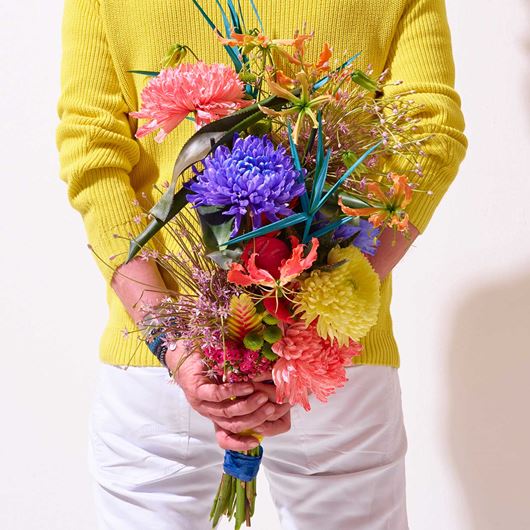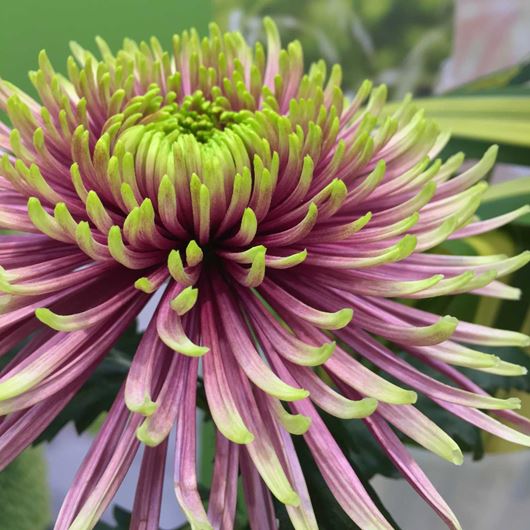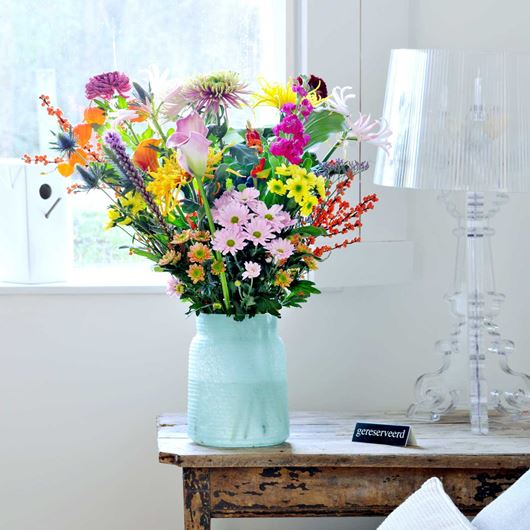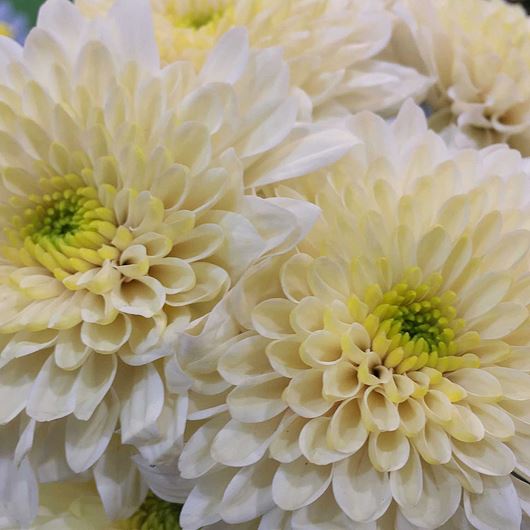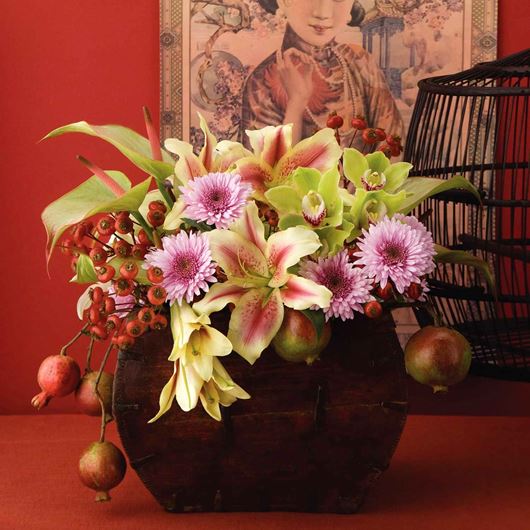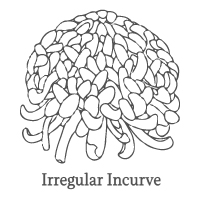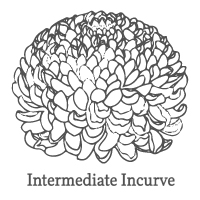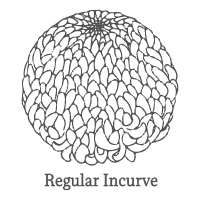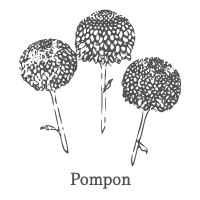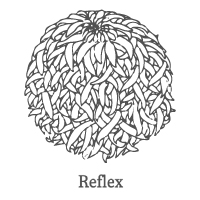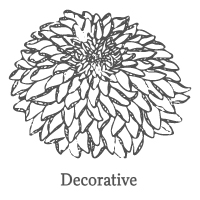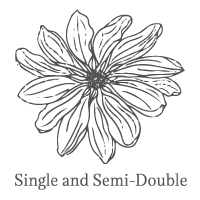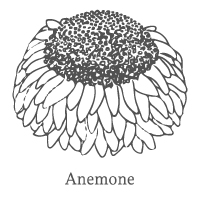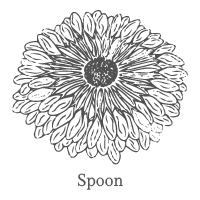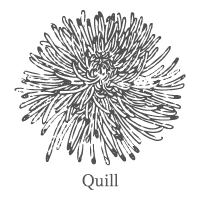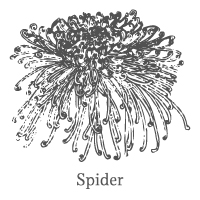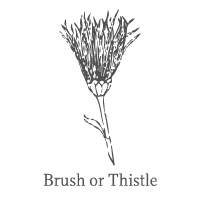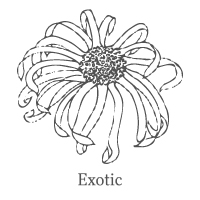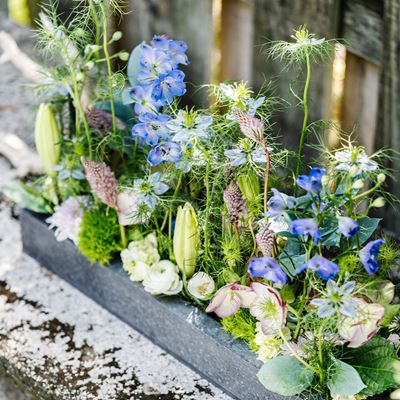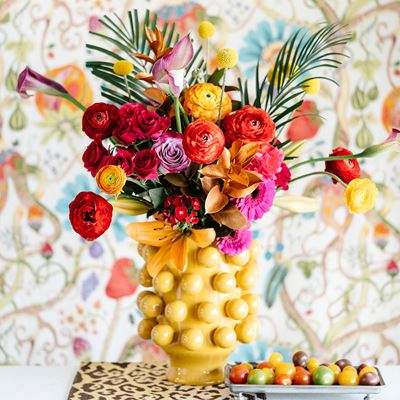Completing our 2023 lookbook series, our sixth and final trend, ATMOSPHERIC, pays homage to our planet's habitats at large. This trending macro view gathers an immersive palette of cool hues, borrowed from the oceans and forests, and pairs it with glowing bright white.
Second Place Goes to Chrysanthemums, the Essential Harbinger of Autumn
A celebrated part of Asian cultures for 3,000 years before being introduced to European gardens in the 17th century, Chrysanthemum flowers are now second only to the rose in worldwide cut flower sales.
Yet it’s in the fall when Chrysanthemums make their seasonal appearance in nature as ambassadors of autumn, overflowing flower beds and floral designers’ displays with such brilliance that the Chinese even named a pattern of fireworks after them. Luckily, the plants are agreeable when coaxed to bloom on alternate schedules, so their cut flowers are available for floral enthusiasts to enjoy year-round.
Flowering Chrysanthemum heads are composite, meaning that each head is actually a community of smaller blooms. The outer circle of ray florets—which look like petals—surround a round center of shorter, denser disc florets. Not all bloom types have a visible disc, but they are still there in the plant’s inner structure. Chrysanthemum plants also have flat, lobed leaves with grayish-toned, velvety undersides. Both flowers and foliage have a fresh, aromatic fragrance that gives flower shops their distinctive “floral” scent.
They are also enthusiastically successful as hybrids. Whether a designer’s recipe calls for a range of bold or pastel colors, large globe-shaped blooms or masses of small, daisy-like filler blossoms on shorter stems—you can bet there’s a mum for that. The spray-type blossoms are the most widely used Chrysanthemums in the floral industry.
This prolific and diverse plant has so many cultivars—with new hybrids constantly being bred—that they have been grouped according to the shape of their blooms, as well as the construction and orientation of their florets. The National Chrysanthemum Society of the U.S.A. sorts the Chrysanthemum genus into 13 classes of bloom forms, with all colors appearing in each of the following groups:
1. Irregular Incurve—Giant, fluffy 6–8" globes on stems up to 24" tall, with florets curved upward and over, covering the center, with a loose skirt of straighter florets around the bottom. Source: The National Chrysanthemum Society
2. Intermediate Incurve—The 6" blooms are smaller and with a more-open look than the irregular incurve, with shorter, only partially incurving florets and full centers. A popular choice among floral designers. Source: The National Chrysanthemum Society
3. Regular Incurve—A smaller (4–6") version of the irregular incurve form, with florets curved upward smoothly in a true ball shape. Source: The National Chrysanthemum Society
4. Pompon—Similar to the irregular and intermediate incurve forms, but more open and much smaller (1–4"). They grow in sprays on taller plants. Source: The National Chrysanthemum Society
5. Reflex—The 4–6" flower heads are also globe-shaped, but with a slightly flatter top and florets overlapping in a downward curve (reflexing) like the feathers on a proud bird’s chest. Source: The National Chrysanthemum Society
6. Decorative—Large 5" blooms are slightly flat, with upper florets incurving and the lower ones reflexing. Center disk florets are completely covered. The plant is short and usually sold as a potted mum. Source: The National Chrysanthemum Society
7. Single and Semi-Double—A classic daisy form, with an open, flat center of disc florets ringed by up to seven rows of ray florets. Flowers are 4" or larger on medium-height plants. Source: The National Chrysanthemum Society
8. Anemone—Similar to the semi-double, but the pillow-like center disc is the star of this flower’s show. The multiple rows of ray florets are shorter and play more of a supporting role. Flowers are 4" or larger on medium-height plants. Source: The National Chrysanthemum Society
9. Spoon—Another variant on the semi-double, with an open center disc and skinny, tubular ray florets which flare in a spoon shape at their tips. Flowers are 4" or larger on tall plants. Source: The National Chrysanthemum Society
10. Quill—Like a porcupine, this flower head is covered with straight, tubular florets which open to pointy tips. The center is completely hidden. Flowers are 6" or greater on medium-height plants. Source: The National Chrysanthemum Society
11. Spider—This exotic blossom has a similar form to the quill, but with tubular ray florets which may be thin or coarse, straight or curved, and are kinked at the ends. They grow 6" or larger on medium-height plants. Source: The National Chrysanthemum Society
12. Brush or Thistle—With fine, tubular florets that jut straight up or out, these petite blossoms bring to mind the bristles of a paint brush or thistle. Flowers are less than 2" and grow in sprays on medium-height plants. Source: The National Chrysanthemum Society
13. Exotic—These blooms don’t fit neatly into any of the other categories. They may look like combinations of one or more of the other forms, or may have some other unique “twist” that makes them stand in a class by themselves. Source: The National Chrysanthemum Society
FUN FACTS
• Fifteen percent of all cut flowers sold worldwide are Chrysanthemum flowers! Roses are the only other flowers that outsell them. Potted versions also rate near the top of the best seller list for blooming plants.
• The plant has been cultivated in China since the 15th century B.C.
• The name comes from the Greek word "chrysos" (meaning gold) and "anthemon" (meaning flower). It is also known as "ju hua" in China and "kiku" in Japan.
• Chrysanthemum flowers have been used in Asian cuisine for centuries. The petals are boiled for tea, stirred into broth and infused into rice wine. The leaves can be steamed as a side dish or used as a garnish. Note that as with all flowers, Chrysanthemum plants are only safe to consume if they are organic, untreated and properly prepared.
• Chrysanthemum flowers also have a place in Chinese medicine. Dried blossoms are traditionally steeped or ground and used to treat inflammation, dizziness, hearing loss, colds and the flu, high blood pressure, maladies of the eyes and stress. They are also said to have disinfectant properties.
• When eaten raw, Chrysanthemum plants can cause severe gastric distress and nausea—especially to pets. Direct contact may also irritate the skin. Sesquiterpene, lactones and pyrethrins are among the offending toxins.
• Chrysanthemum plants are natural insecticides. The pyrethrins—which make your pet sick—will make bugs even sicker! Chrysanthemum-based insecticides are effective and popular with campers and gardeners alike.
• Chrysanthemum flowers are natural air cleaners. One study conducted by NASA found potted mums to be among the plants which absorb pollutants through their leaves and neutralize them through their root systems.
• The Chrysanthemum is a symbol of the imperial family of Japan and is used on all royal crests. The name “Chrysanthemum Throne” refers not only to the chair, but to the Emperor himself.
• The official flower of the cities of Chicago, Illinois and Salinas, California is the Chrysanthemum. Mums are also floral symbols used by the fraternities Lambda Kappa Sigma, Triangle and Phi Kappa Sigma, as well as the sorority Sigma Alpha.
• A quintessential fall flower, the Chrysanthemum is also the birth month flower for November.
• The Chrysanthemum is the 13th wedding anniversary flower.
• A member of the Asteraceae (daisy) family, the Chrysanthemum is related to Dahlias, sunflowers and thistles.
SPECIAL CARE
Select thick, strong stems with flower heads and foliage that show vibrant, uniform colors. When purchasing spray mums, select stems with a sufficient number of flower heads per stem. Regarding the latter, make sure that a majority of these heads are open.
When processing stems, strip all foliage that falls below the water line. Recut them about 2.5 cm at an angle (45-degrees) and place them in a rehydration solution with no more than 2–3% sugar and a germicide. Bud-cut standard Chrysanthemum flowers can be stored up to two weeks at 33–35ºF (0.6–1.7ºC). Fully mature blooms can be stored dry (wrapped in polyethylene) for up to four weeks at 32ºF (0ºC).
Chrysanthemum plants don’t have much of a sweet tooth; too much sugar in the vase water makes the leaves yellow. So, consumers only need to add flower food to their vase solution if the stems are in the bud stage. Fully open mums will actually do better without it. They also prefer high humidity and ample air circulation.
The Chrysanthemum is only one of the Flowers We Love, and we would love to share them all with you. Whether flowers are your passion or your profession, this living encyclopedia will expand your knowledge and entice your imagination. Visit often as we add entries to keep your floral skills growing.
